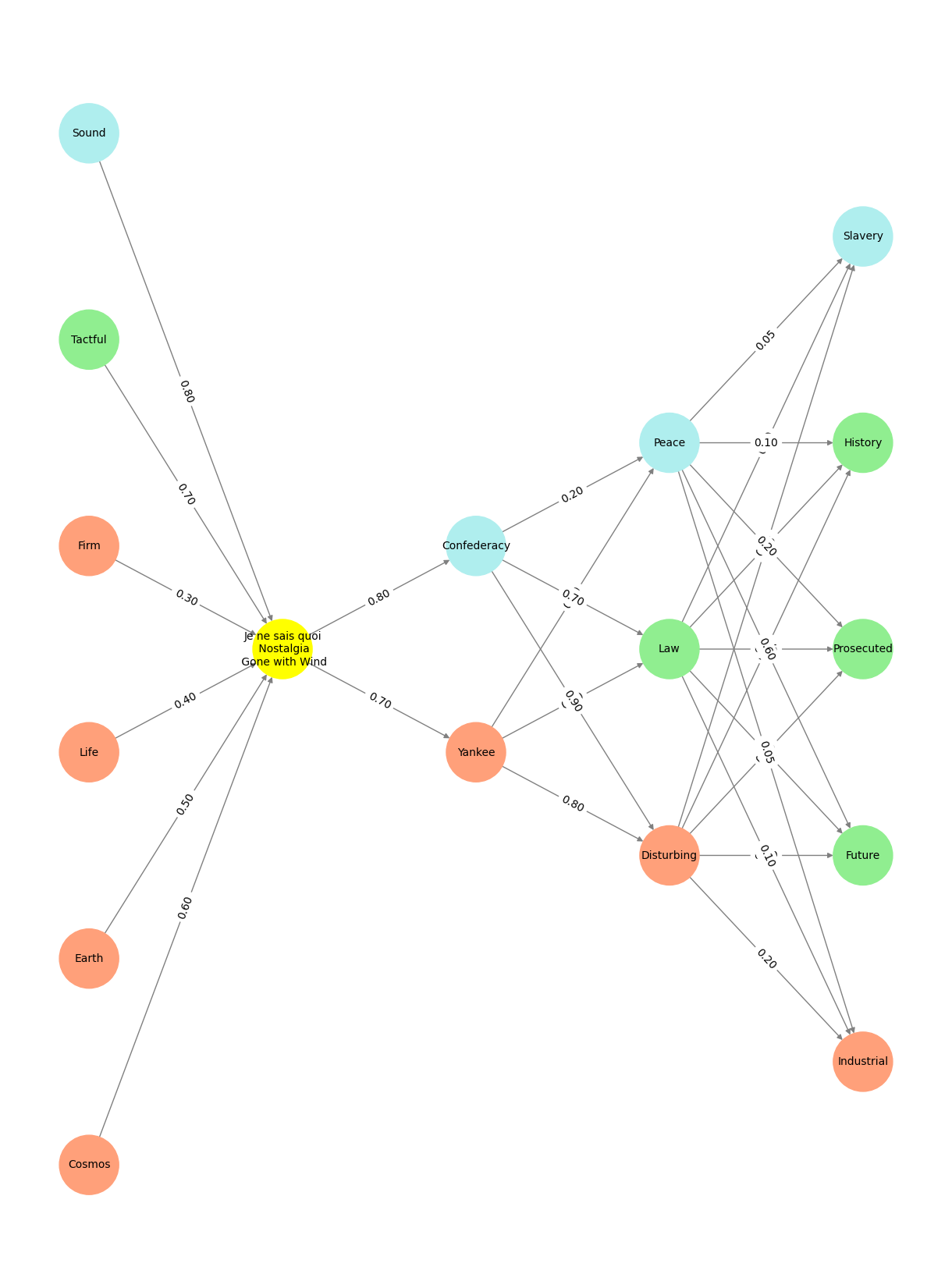Catalysts#
Epic Nostalgia in Cinema#

Fig. 5 I just watched this film. My friends make fun of me for watching old films. But I let my self be me and just sit back and watch them. It makes me realize of how the time of the past used to be, how real and genuine everything was. It’s a shame for what the world has become. I imagine if we brought the old souls back to life, they’d cry to die again. This film is an absolute masterpiece. The story, the power that it holds is incredible. Gone with the wind as like the air has no way of it, you just flow for where it takes you with it. That’s how this whole film for me.#
The Nostalgic Pulse of Epic Storytelling#
Epic storytelling, at its core, often embodies a wistful yearning for times irrevocably lost. Though the term “epic” evokes grandeur, heroism, and sweeping narratives, a common undercurrent threads through these towering tales: nostalgia. The ache for a bygone era, a vanishing world, or an irretrievable personal truth seems to be the lifeblood of epics, whether they unspool in the realms of literature, cinema, or myth. The greater the sweep, the more profound the backward glance.
Take Citizen Kane, a film hailed as one of the greatest ever made. Ostensibly, it chronicles the life of Charles Foster Kane, a man of outsized ambition and power. Yet the film’s beating heart lies in Rosebud, that enigmatic sled, a touchstone for Kane’s lost innocence and simpler times. Beneath the dazzling technical innovations and labyrinthine structure, the film’s essence is pure nostalgia—a yearning for an Eden of childhood that no wealth or power can restore. Rosebud is the soul of the epic, whispering that behind the grandeur lies a wound time will never heal.
Then there’s Dr. Zhivago, a sprawling canvas of revolution, romance, and exile, set against the upheaval of early 20th-century Russia. The mournful strains of the balalaika, echoing throughout Maurice Jarre’s score, are laden with sorrow for a world obliterated by history. Yuri Zhivago’s poetry, his love for Lara, and the snow-dappled expanses of the Russian steppe all belong to a time that the revolution swept away. The personal and political entwine, yet both carry the same lamentation: something beautiful has been lost, and we can only look back through the frosted glass of memory.
The nostalgia in Gone with the Wind is both profound and problematic, steeped in longing for an antebellum South mythologized as a world of chivalry and gentility. “A civilization gone with the wind” rings like a death knell for a way of life, even as the film’s sumptuous cinematography glorifies that very past. Modern sensibilities bristle at its romanticized portrayal of a society built on slavery, and disclaimers now accompany its presentation on streaming platforms. Yet the film’s core remains a love letter to a dream remembered—a vision of grace and grandeur, however morally flawed, irretrievably consigned to history’s ashes.
Lawrence of Arabia may seem an unlikely candidate for nostalgia, yet it too bears the hallmarks of longing for a vanishing age. T.E. Lawrence’s exploits unfold against the dying embers of the British Empire, as the desert kingdoms he fights to liberate are inevitably reshaped by the encroachment of Western powers. The shimmering heat of the sands and the haunting strains of Maurice Jarre’s score evoke an aching beauty, a moment in history suspended between epic triumph and inevitable dissolution. Even Lawrence himself seems to understand that his time is ephemeral, destined to fade into legend as quickly as it arose.
The pattern repeats across celebrated epics. The Godfather, often regarded as a modern epic, is drenched in nostalgia for a time when family ties were sacred, even as its characters destroy those very bonds. The Last Emperor laments the fall of imperial China, while Once Upon a Time in America intertwines the rise of organized crime with an elegy for youthful dreams lost in the haze of time. Epics are grandiose, yes, but they are also elegiac. They look to the past with a mixture of reverence and regret, their narratives stretching across years, decades, or even centuries to remind us of what we’ve left behind.
What is it about the epic form that lends itself so readily to nostalgia? Perhaps it is the sheer scale of these stories, which demand not only the breadth of space but also the depth of time. By their nature, epics are concerned with transformation—of individuals, societies, and eras. Yet every transformation leaves behind a shadow, a lingering sense of what once was. The larger the story, the more poignant the loss.
Epics are also uniquely positioned to explore the fragility of human endeavors. They often chronicle the rise and fall of civilizations, the fleeting nature of power, and the inevitability of change. Whether it is the doomed splendor of Camelot in Excalibur, the decline of the American Dream in There Will Be Blood, or the intergalactic elegy of Dune, epics remind us that nothing lasts forever. They are, in a sense, monuments to impermanence, inviting us to mourn even as we marvel.
To create an epic, then, is to engage with nostalgia. It is to stand at the crossroads of memory and history, crafting stories that resonate with the ache of what can never be reclaimed. The chivalric romance, the revolutionary fervor, the childhood sled, the shimmering desert—each epic, in its grandeur, is a mirror reflecting the fragile, fleeting beauty of existence. We revisit them not just for their spectacle but for the ghosts they conjure, the echoes they leave in our hearts. In their vastness, they remind us of our smallness, and in their nostalgia, they remind us of what it means to be human.
Show code cell source
import numpy as np
import matplotlib.pyplot as plt
import networkx as nx
# Define the neural network structure
def define_layers():
return {
'Pre-Input': ['Cosmos', 'Earth', 'Life', 'Firm', 'Tactful', 'Sound', ],
'Yellowstone': ['Je ne sais quoi\n Nostalgia\n Gone with Wind'],
'Input': ['Yankee', 'Confederacy'],
'Hidden': [
'Disturbing',
'Law',
'Peace',
],
'Output': ['Industrial', 'Future', 'Prosecuted', 'History', 'Slavery', ]
}
# Define weights for the connections
def define_weights():
return {
'Pre-Input-Yellowstone': np.array([
[0.6],
[0.5],
[0.4],
[0.3],
[0.7],
[0.8],
[0.6]
]),
'Yellowstone-Input': np.array([
[0.7, 0.8]
]),
'Input-Hidden': np.array([[0.8, 0.4, 0.1], [0.9, 0.7, 0.2]]),
'Hidden-Output': np.array([
[0.2, 0.8, 0.1, 0.05, 0.2],
[0.1, 0.9, 0.05, 0.05, 0.1],
[0.05, 0.6, 0.2, 0.1, 0.05]
])
}
# Assign colors to nodes
def assign_colors(node, layer):
if node == 'Je ne sais quoi\n Nostalgia\n Gone with Wind':
return 'yellow'
if layer == 'Pre-Input' and node in ['Sound', ]:
return 'paleturquoise'
elif layer == 'Pre-Input' and node in ['Tactful', ]:
return 'lightgreen'
elif layer == 'Input' and node == 'Confederacy':
return 'paleturquoise'
elif layer == 'Hidden':
if node == 'Peace':
return 'paleturquoise'
elif node == 'Law':
return 'lightgreen'
elif node == 'Disturbing':
return 'lightsalmon'
elif layer == 'Output':
if node == 'Slavery':
return 'paleturquoise'
elif node in ['History', 'Prosecuted', 'Future']:
return 'lightgreen'
elif node == 'Industrial':
return 'lightsalmon'
return 'lightsalmon' # Default color
# Calculate positions for nodes
def calculate_positions(layer, center_x, offset):
layer_size = len(layer)
start_y = -(layer_size - 1) / 2 # Center the layer vertically
return [(center_x + offset, start_y + i) for i in range(layer_size)]
# Create and visualize the neural network graph
def visualize_nn():
layers = define_layers()
weights = define_weights()
G = nx.DiGraph()
pos = {}
node_colors = []
center_x = 0 # Align nodes horizontally
# Add nodes and assign positions
for i, (layer_name, nodes) in enumerate(layers.items()):
y_positions = calculate_positions(nodes, center_x, offset=-len(layers) + i + 1)
for node, position in zip(nodes, y_positions):
G.add_node(node, layer=layer_name)
pos[node] = position
node_colors.append(assign_colors(node, layer_name))
# Add edges and weights
for layer_pair, weight_matrix in zip(
[('Pre-Input', 'Yellowstone'), ('Yellowstone', 'Input'), ('Input', 'Hidden'), ('Hidden', 'Output')],
[weights['Pre-Input-Yellowstone'], weights['Yellowstone-Input'], weights['Input-Hidden'], weights['Hidden-Output']]
):
source_layer, target_layer = layer_pair
for i, source in enumerate(layers[source_layer]):
for j, target in enumerate(layers[target_layer]):
weight = weight_matrix[i, j]
G.add_edge(source, target, weight=weight)
# Customize edge thickness for specific relationships
edge_widths = []
for u, v in G.edges():
if u in layers['Hidden'] and v == 'Kapital':
edge_widths.append(6) # Highlight key edges
else:
edge_widths.append(1)
# Draw the graph
plt.figure(figsize=(12, 16))
nx.draw(
G, pos, with_labels=True, node_color=node_colors, edge_color='gray',
node_size=3000, font_size=10, width=edge_widths
)
edge_labels = nx.get_edge_attributes(G, 'weight')
nx.draw_networkx_edge_labels(G, pos, edge_labels={k: f'{v:.2f}' for k, v in edge_labels.items()})
plt.title(" ")
# Save the figure to a file
# plt.savefig("figures/logo.png", format="png")
plt.show()
# Run the visualization
visualize_nn()


Fig. 6 In the context of your donor app, this means not only providing personalized risk estimates but also redefining informed consent as a quantifiable standard. Beyond the app, this framework offers a universal lens for understanding and improving systems in medicine, AI, and society. In the end, the greatest of these is love—but only when rooted in faith and hope.#

